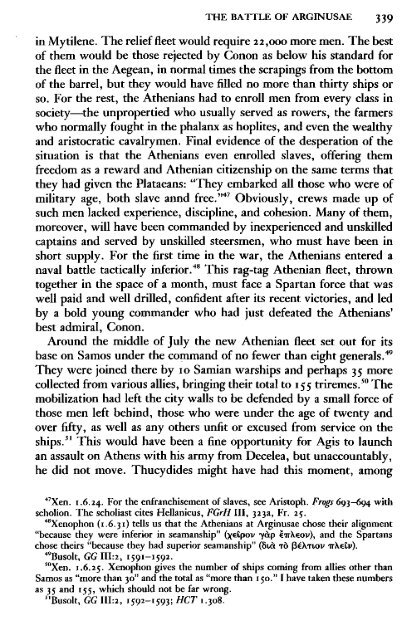The Fall of the Athenian Empire-(A New History of the Peloponnesian War) Donald Kagan - (1987)
MACEDONIA is GREECE and will always be GREECE- (if they are desperate to steal a name, Monkeydonkeys suits them just fine) ΚΑΤΩ Η ΣΥΓΚΥΒΕΡΝΗΣΗ ΤΩΝ ΠΡΟΔΟΤΩΝ!!! Strabo – “Geography” “There remain of Europe, first, Macedonia and the parts of Thrace that are contiguous to it and extend as far as Byzantium; secondly, Greece; and thirdly, the islands that are close by. Macedonia, of course, is a part of Greece, yet now, since I am following the nature and shape of the places geographically, I have decided to classify it apart from the rest of Greece and to join it with that part of Thrace which borders on it and extends as far as the mouth of the Euxine and the Propontis. Then, a little further on, Strabo mentions Cypsela and the Hebrus River, and also describes a sort of parallelogram in which the whole of Macedonia lies.” (Strab. 7.fragments.9) ΚΚΕ, ΚΝΕ, ΟΝΝΕΔ, ΑΓΟΡΑ,ΕΚΚΛΗΣΙΑ,ΝΕΑ,ΦΩΝΗ,ΦΕΚ,ΝΟΜΟΣ,LIFO,MACEDONIA, ALEXANDER, GREECE,IKEA
MACEDONIA is GREECE and will always be GREECE- (if they are desperate to steal a name, Monkeydonkeys suits them just fine)
ΚΑΤΩ Η ΣΥΓΚΥΒΕΡΝΗΣΗ ΤΩΝ ΠΡΟΔΟΤΩΝ!!!
Strabo – “Geography”
“There remain of Europe, first, Macedonia and the parts of Thrace that are contiguous to it and extend as far as Byzantium; secondly, Greece; and thirdly, the islands that are close by. Macedonia, of course, is a part of Greece, yet now, since I am following the nature and shape of the places geographically, I have decided to classify it apart from the rest of Greece and to join it with that part of Thrace which borders on it and extends as far as the mouth of the Euxine and the Propontis. Then, a little further on, Strabo mentions Cypsela and the Hebrus River, and also describes a sort of parallelogram in which the whole of Macedonia lies.”
(Strab. 7.fragments.9)
ΚΚΕ, ΚΝΕ, ΟΝΝΕΔ, ΑΓΟΡΑ,ΕΚΚΛΗΣΙΑ,ΝΕΑ,ΦΩΝΗ,ΦΕΚ,ΝΟΜΟΣ,LIFO,MACEDONIA, ALEXANDER, GREECE,IKEA
Create successful ePaper yourself
Turn your PDF publications into a flip-book with our unique Google optimized e-Paper software.
342 TilE FALL OF THE ATHENIAN EMPIRE<br />
Diodorus tells wonderful tales <strong>of</strong> dire and remarkably accurate portents<br />
that led <strong>the</strong> seers on both sides vainly to advise against fighting on <strong>the</strong><br />
appointed day. On <strong>the</strong> Spartan side, waves are said to have covered<br />
<strong>the</strong> head <strong>of</strong> <strong>the</strong> sacrificial victim, portending <strong>the</strong> death <strong>of</strong> <strong>the</strong> Spartan<br />
admiral. Thrasyllus (wrongly called Thrasybulus, as usual), whom<br />
Diodorus designates as <strong>the</strong> chief commander <strong>of</strong> <strong>the</strong> A<strong>the</strong>nian forces<br />
on <strong>the</strong> fatal day, is said to have had a dream in which he and his seven<br />
fellow generals were performing Euripides' Phoenissae while <strong>the</strong>ir opponents<br />
were doing <strong>the</strong> same poet's Suppliants, both plays about <strong>the</strong><br />
legend <strong>of</strong> <strong>the</strong> seven against <strong>The</strong>bes. Thrasyllus and his comrades won<br />
a "Cadmeian victory" in which <strong>the</strong>y were all killed. It did not take a<br />
very imaginative seer to see this as a portent <strong>of</strong> A<strong>the</strong>nian victory at<br />
<strong>the</strong> expense <strong>of</strong> <strong>the</strong> lives <strong>of</strong> its generals. Callicratidas, we are told,<br />
believed <strong>the</strong> Spartan prophecy but was not deterred. He was willing<br />
to die to achieve a Spartan victory. He was prudent enough, however,<br />
to name <strong>the</strong> experienced commander Clearchus to take his place in<br />
case he died in battle. 58 Through all <strong>of</strong> <strong>the</strong> romantic invention here,<br />
we probably can discern a fact. It did not take portents or seers to<br />
suggest <strong>the</strong> desirability <strong>of</strong> establishing a clear chain <strong>of</strong> command in a<br />
naval battle but only a memory <strong>of</strong> what had happened at Notium.<br />
<strong>The</strong> death <strong>of</strong> Antiochus early in <strong>the</strong> fighting and <strong>the</strong> disastrous confusion<br />
it caused were certainly known to both sides, and Callicratidas<br />
acted with prudence to avoid such an outcome.<br />
<strong>The</strong> Spartan fleet entered <strong>the</strong> battle in standard array, moving forward<br />
line abreast, <strong>the</strong> 1 20 ships side by side, spanning a distance <strong>of</strong><br />
about 2,400 yards, or a mile and a third. 59 It was an order that would<br />
58<br />
Diod. IJ-97·4-98.1.<br />
59 [ know <strong>of</strong> no ancient testimony on or modern discussion <strong>of</strong> <strong>the</strong> normal space between<br />
triremes when rowing abreast. My estimate is based on two calculations: <strong>the</strong> greatest<br />
space between ships compatible with preventing an enemy from making <strong>the</strong> maneuver<br />
called <strong>the</strong> diekplous (breaking through <strong>the</strong> line) and <strong>the</strong> space needed to permit a quick<br />
half-turn to ei<strong>the</strong>r side, allowing a change to <strong>the</strong> line ahead; or columnar formation.<br />
(For a good discussion <strong>of</strong> <strong>the</strong>se tactics, see J. S. Morrison and R. T. Williams, Greek<br />
Dared Ships, goo-pz B. C. [Cambridge, 1968], 3 14.) <strong>The</strong> first distance may be calculated<br />
by adding <strong>the</strong> maximum breadth <strong>of</strong> <strong>the</strong> top deck <strong>of</strong> <strong>the</strong> trireme attempting <strong>the</strong> diekpkJus<br />
from outrigger to outrigger ( 16 feet), doubling <strong>the</strong> distance between <strong>the</strong> outrigger on<br />
one side and <strong>the</strong> place where <strong>the</strong> oars amidships strike <strong>the</strong> water, plus 2 feet on each<br />
side for <strong>the</strong> distance between <strong>the</strong> outrigger and <strong>the</strong> top <strong>of</strong> <strong>the</strong> gunwale amidships, and<br />
<strong>the</strong> same distance to account for <strong>the</strong> distance between gunwale and <strong>the</strong> place where<br />
<strong>the</strong> oar strikes <strong>the</strong> water on <strong>the</strong> inboard side <strong>of</strong> each <strong>of</strong> <strong>the</strong> defending ships. (<strong>The</strong><br />
dimensions <strong>of</strong> triremes and oars are given in Morrison and Williams, Greek Oared Ships,<br />
z85, 289; and L. Casson, Ships and Seamanship in <strong>the</strong> Ancient World [Princeton, N.J.,<br />
1971], 77.) <strong>The</strong> distance between <strong>the</strong> outrigger and <strong>the</strong> place where <strong>the</strong> oar strikes <strong>the</strong>

















